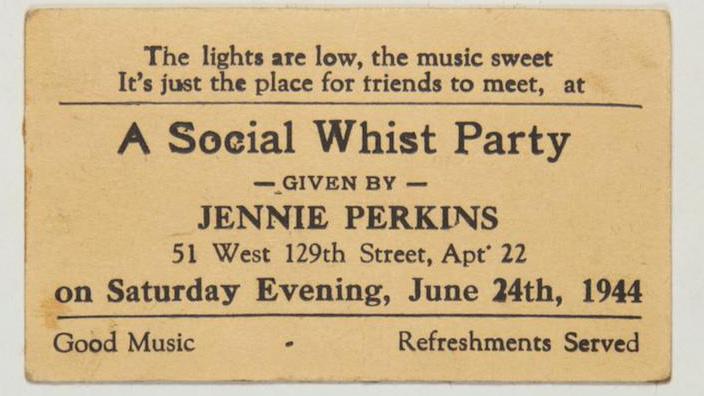
Stride is one of the most athletic forms of jazz piano from the early 20th Century. With the characteristic leaping left hand (hence the name), and its heavy use of improvisation and syncopation, it was highly competitive. Pianists would often have "cutting contests,” many times at Harlem Rent Parties, where performances occurred in homes to help the tenants and musicians make ends meet.
Aaron Diehl connects that history to our current time with a streaming concert featuring compositions by James P. Johnson, Thomas 'Fats' Waller, Willie 'the Lion' Smith, and other luminaries from the 1920’s. Though the current global health crisis prevents as from gathering together for live concerts, virtual performances today offer unique ways for communities to support artists and stay connected through music, just as the Harlem Rent Parties supported the New York bastion of art in the 1920s.
Tune in to the stream on Friday, May 1 at 7:00 pm CDT on Facebook Live and on chicagopresents.uchicago.edu, sponsored by UChicago Presents, the Chamber Music Society of Detroit, and the Civic Music Association of Des Moines.

Concert stream: Aaron Diehl, piano
Friday | May 1 | 7:00 pm CDT
"Doors open" at 6:30 pm
Aaron Diehl, "a rising star of jazz piano," (New York Daily News) performs a streaming concert of ragtime music by James P. Johnson, Thomas "Fats" Waller, Willie "The Lion" Smith, and more.

See Langston Hughes' Collection of Rent Party Advertisements
Harlem, New York was the scene of an explosion in black literature, art, and music in the 1920s, but it also became the epicenter of a ballooning rent crisis for African Americans. Ever creative, the residents of Harlem began hosting rent parties as a means to share their art and raise money to cover their bills.
Langston Hughes, one of the most prominent figures of the Harlem Renaissance, collected the creative invitations used to share these parties. You can view Langston Hughes' Collection of Rent Party Advertisementsonline courtesy of the Beinecke Rare Book & Manuscript Library at Yale University, and you can also dive deeper into the history of rent parties and the advent of stride piano with Jazz 88.3 KSDS on YouTube.
See the original ads >>

Dive into the music of Willie 'The Lion' Smith
NPR's Nancy Wilson explored the music of Willie 'The Lion' Smith on her program Jazz Profiles in the summer of 2008. Listen to the episode onNPR.org and get a behind-the-scenes look at one of the great stride pianists. Then, you can dive deeper into the history of stride and ragtime with theLibrary of Congress.
Listen to the story >>

Explore Art from the Harlem Renaissance
From October 2018 to January 2019, the Columbus Museum of Art celebrated the 100th anniversary of the Harlem Renaissance, a flowering of black art, literature, and music, with an exhibit titled I, too, Sing America. See some of the items on view from that exhibit on the museum's website, and explore more art from the era with the National Gallery of Art.
